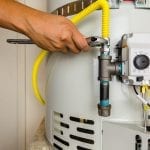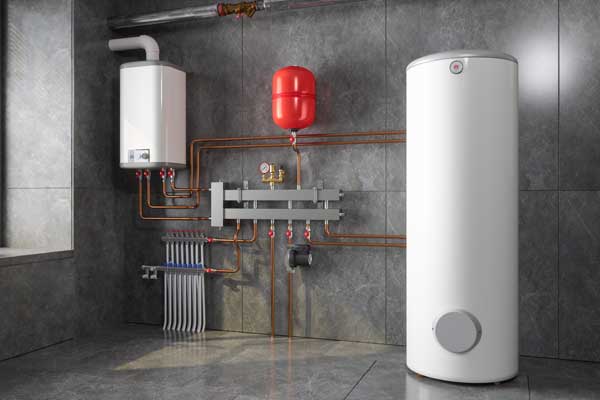Ensuring Durability of Your Home's Hot Water System: Care Tips
Ensuring Durability of Your Home's Hot Water System: Care Tips
Blog Article
This post directly below about Water Heater Maintenance Tips You Can't Afford to Forget is unquestionably insightful. Don't skip it.

Hot water is essential for everyday convenience, whether it's for a refreshing shower or cleaning dishes. To guarantee your hot water system runs successfully and lasts much longer, normal upkeep is essential. This article gives practical ideas and insights on just how to preserve your home's hot water system to stay clear of interruptions and costly fixings.
Introduction
Maintaining your home's warm water system might appear difficult, yet with a few basic actions, you can ensure it runs efficiently for several years to find. This overview covers whatever from understanding your warm water system to DIY upkeep ideas and recognizing when to call expert aid.
Significance of Keeping Your Hot Water System
Regular maintenance not just extends the life-span of your hot water system however also ensures it operates successfully. Overlooking maintenance can cause lowered efficiency, higher energy bills, and even early failure of the system.
Signs Your Hot Water System Needs Maintenance
Understanding when your warm water system requires focus can prevent major problems. Watch out for indicators such as irregular water temperature level, weird sounds from the heater, or rusty water.
Understanding Your Hot Water System
Before diving into maintenance tasks, it's practical to recognize the standard parts of your warm water system. Typically, this includes the water heater itself, pipes, anode rods, and temperature controls.
Regular Monthly Maintenance Tasks
Routine regular monthly checks can help catch minor issues before they escalate.
Flushing the Water Heater
Flushing your water heater removes sediment buildup, enhancing effectiveness and extending its life.
Checking and Replacing Anode Rods
Anode poles stop corrosion inside the tank. Inspecting and replacing them when worn out is crucial.
Checking and Changing Temperature Level Settings
Adjusting the temperature settings makes certain optimum performance and security.
DIY Tips for Upkeep
You can carry out several maintenance jobs on your own to maintain your hot water system in top problem.
Looking for Leakages
Frequently inspect pipelines and links for leaks, as these can result in water damages and higher bills.
Examining Stress Relief Valves
Testing the stress safety valve ensures it functions appropriately and stops excessive stress accumulation.
Protecting Pipes
Shielding warm water pipes lowers warm loss and can save power.
When to Call a Specialist
While DIY upkeep is helpful, some problems require specialist competence.
Complicated Issues Needing Specialist Assistance
Examples consist of major leakages, electric problems, or if your hot water heater is regularly underperforming.
Regular Expert Upkeep Perks
Specialist maintenance can consist of complete inspections, tune-ups, and making certain compliance with safety and security requirements.
Conclusion
Routine maintenance of your home's warm water system is essential for effectiveness, long life, and expense financial savings. By complying with these pointers and understanding when to look for expert aid, you can guarantee a trustworthy supply of hot water without unforeseen disturbances.
Water Heater Maintenance: The Basics
Maintaining your water heater will ensure it operates efficiently and has a longer lifespan. Neglecting regular maintenance can lead to costly repairs and an even bigger chunk of your savings if you have to replace it sooner than necessary. But there’s good news: Most water heater maintenance tasks are relatively simple and easy for homeowners with basic DIY skills.
Flush the Water Heater
Over time, sediment and minerals can build up in the tank, reducing its efficiency and potentially causing damage. To flush the tank, turn off the power or gas supply, attach a hose to the drain valve near the bottom and open the valve to drain the water until it runs clear. Ideally, flush the tank annually.
Replace the Anode Rod
The anode rod is a sacrificial metal rod that helps prevent corrosion inside the tank. Inspect and replace it every three to five years or per the manufacturer's recommendation. To replace the anode rod, turn off the power or gas supply, drain a few gallons of water from the tank, unscrew the old rod and replace it with a new one. If the anode rod is significantly corroded or covered in calcium buildup, it's a sign the water heater may need to be replaced soon.
Tune-Up
A yearly tune-up can help identify potential issues and ensure your water heater operates at peak efficiency. This typically involves checking the thermostat, burner assembly (for gas heaters) and any other components specified by the manufacturer. During a tune-up, the technician may also clean the burner and adjust the pilot light (for gas heaters) or examine the heating elements (for electric heaters).
How to Maintain Your Water Heater
Insulate the tank. Insulating the tank can improve energy efficiency and reduce heat loss, saving you money on energy bills. You can purchase precut insulation blankets designed specifically for water heaters or use standard fiberglass insulation wrapped securely around the tank. Check the temperature. The recommended water temperature for most households is around 120 degrees Fahrenheit (49 degrees Celsius). Higher temperatures can increase energy costs and potentially cause scalding. Use a kitchen thermometer to check the temperature at the faucet nearest the water heater. Monitor water pressure. Excessive water pressure can strain the water heater and cause leaks or even tank failure. Install a pressure-reducing valve if necessary. The ideal water pressure range is between 60 and 70 PSI (pounds per square inch). Test the temperature and pressure (T&P) relief valve. The T&P relief valve is a safety feature that releases pressure if the tank gets too hot or the pressure builds up too high. Test it annually by lifting the lever and allowing a small amount of water to release. Replace the valve if it doesn't release water or reseal properly. Check for leaks. Regularly inspect the tank, pipes and fittings for leaks or corrosion. Deal with issues promptly to prevent further damage. Even a small leak can lead to significant water damage over time. Consider a tankless water heater. If your traditional tank-style water heater is nearing the end of its lifespan ( typically 10 years), consider replacing it with a tankless water heater. These units heat water on demand, reducing standby energy losses and potentially saving you money on your energy bills. Schedule professional maintenance. While homeowners can perform many water heater maintenance tasks, it's still a good idea to schedule professional maintenance every few years. A plumber or HVAC technician can thoroughly inspect the unit, identify potential issues and ensure it operates safely and efficiently. https://www.homeserve.com/en-us/blog/home-improvement/hot-water-heater-maintanence/

As an avid reader on Tips on Maintaining a Water Heater, I thought sharing that section was really helpful. Are you aware of anybody else who is fascinated by the topic? Do not hesitate to share it. I am grateful for being here. Revisit us soon.
About This Report this page